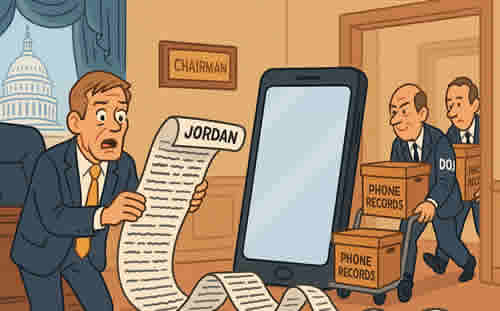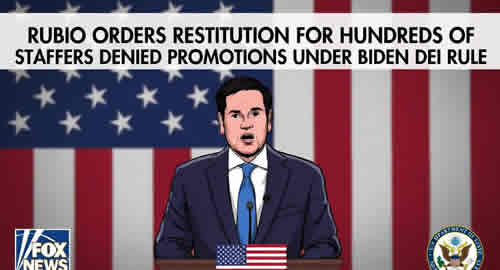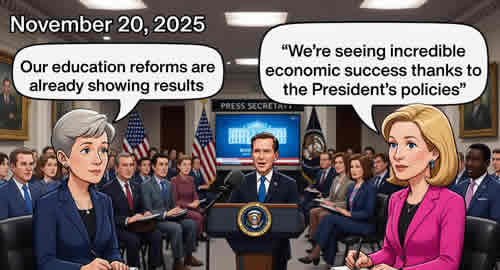
As Americans prepare for Thanksgiving 2025, families across the country are seeing signs of economic relief that the Trump Administration credits to its efforts to unleash American energy, cut regulations, and fight inflation, following what it describes as the worst inflation crisis in 40 years under Joe Biden and the Democrats. Local reports from states including Colorado, Texas, Indiana, Ohio, New Hampshire, Pennsylvania, Wisconsin, and others show gas prices falling—often below $3 per gallon and in some places nearing $2—just in time for holiday travel, while multiple Farm Bureau surveys reveal that the cost of a classic 10-person Thanksgiving meal has dropped, with notable savings on turkeys and other staples and some states like Louisiana and Michigan coming in well below the national average. While emphasizing that this is not “mission accomplished” and that Americans are still paying too much after years of what it calls reckless Democrat spending and regulation, the Trump Administration frames these lower gas and grocery prices as early evidence that its push for bold, structural economic changes is beginning to deliver tangible savings for American families.
More Relief on the Way as Economic Wins Bring Savings to Gas Pump, Thanksgiving Table
As millions of American families prepare to gather for Thanksgiving, they’re seeing a dose of the economic relief President Donald J. Trump is fighting to deliver. After inheriting the worst inflation crisis in 40 years from Joe Biden and Democrats, the Trump Administration’s actions to unleash American energy, slash regulations, and crush inflation are translating into lower gas prices in many states and a decrease in the cost of Thanksgiving dinner.
Make no mistake: this is not “mission accomplished.” Americans are still paying far too much after four years of reckless Democrat spending and regulation — and that’s why the Trump Administration is relentlessly fighting to deliver the bold, structural changes that will bring lasting relief to all American families.
Here’s what local news outlets are reporting as those signs of change start to appear:
KDVR-TV (Denver, CO): Cheapest gas prices in Denver hit less than $2 Sunday ahead of Thanksgiving weekend
Gas prices in Denver are trending down just in time for the busy Thanksgiving travel weekend, with one station in the city even hitting less than $2 on Sunday, according to GasBuddy. Just in the last week, gas prices in Denver have fallen 14.5 cents per gallon, hitting a $2.47 per gallon average Monday morning, GasBuddy reported. That number is lower than the national average of $3.03 per gallon, and it is even nearly 30 cents lower than Denver’s average prices a year ago.
KIMT-TV (Des Moines, IA): Lower Turkey Prices Bring Thanksgiving Savings to Iowa
Iowans can look forward to saving on their Thanksgiving meals this year. The American Farm Bureau Federation’s survey reveals the average cost of a classic 10-serving holiday meal is $55.18, down 5% from last year. In the Midwest, the average is slightly lower at $54.38. The survey highlights a decrease in frozen turkey prices as a major factor in the overall savings. Items like a 16-pound turkey, fresh cranberries, and dinner rolls have all seen price drops, attributed to lower wheat prices.
KSAT-TV (San Antonio, TX): San Antonio gas prices set to hit pandemic-era lows for Thanksgiving
San Antonio drivers may have noticed some interesting movement at the pump this week… Thanksgiving travelers are still expected to see cheaper gas at the pump compared to last year.
The Detroit Free Press (Detroit, MI): Ingredients that go into Preparing a Thanksgiving Meal to Cost Less this Year
In Michigan, those making the holiday meal will pay even less, $51.80 for a meal serving 10 people, Theresa Sisung, industry relations specialist for the Michigan Farm Bureau, told the Free Press.
WBIW Radio (Bloomington, IN): Indiana gas prices drop sharply ahead of holiday travel
Hoosier drivers are getting a break at the pump just in time for the busy holiday travel season, with average gasoline prices in Indiana falling 12.3 cents per gallon in the last week.
WGRZ-TV (Buffalo, New York): The Cost of Thanksgiving Dinner is Down for the Third Year in a Row
The American Farm Bureau Federation says the average price for a 16-pound turkey in the U.S. is $21.50. That’s down more than 16 percent from last year.
WKYC-TV (Cleveland, OH): Gas prices plummet in Northeast Ohio
Gas prices have gone down in Northeast Ohio within the last week, bringing the average cost in Akron and Cleveland below $3 per gallon. Akron saw the biggest drop, falling 38.1 cents within the last week.
WMUR-TV (Manchester, NH): Lower gas prices expected for Thanksgiving travelers this year
Anyone who plans to hit the roads for Thanksgiving travel this year will likely see the cheapest gas prices in the past few years. According to GasBuddy, gas prices in New Hampshire are expected to be the lowest they have been for the Thanksgiving holiday since 2021.
KDKA-TV (Pittsburgh, PA): Gas prices in the Pittsburgh area on the decline ahead of Thanksgiving travel
One small consolation for your trip is the price of gas… We are on a downward trajectory. We should see some solid relief in Pittsburgh over the next few weeks in terms of falling gas prices.
WLUK-TV (Green Bay, WI): Gas prices drop ahead of busy travel week
Average gasoline prices in Green Bay have fallen 5 cents per gallon in the last week, averaging $2.75/g today, according to GasBuddy… GasBuddy forecasts a national average price of gas of $3.02 per gallon on Thanksgiving Day, matching last year and marking one of the cheapest holiday averages since 2021.
The Shreveport Times (Shreveport, LA): Thanksgiving Dinner with Turkey is Bargain in Louisiana, Where Costs Are Below U.S. Average
A Thanksgiving family feast to feed 10 people in Louisiana this year is more affordable than any other state in the U.S. except for Arkansas, according to the annual American Farm Bureau cost survey. The cost for 11 market basket items including a whole frozen turkey in Louisiana in 2025 is $44.70. That’s more than $10 cheaper than the national average of $55.18.
WAND-TV (Decatur, IL): Illinois Farm Bureau: Turkey Prices have Dropped Around 16%
Thanksgiving dinner prices in Illinois are going down. The Illinois Farm Bureau said that turkey prices have dropped around 16%, just over a dollar per pound. Other Thanksgiving staples like stuffing and pie crusts are also getting cheaper.
KJZZ Radio (Phoenix, AZ): Arizona Thanksgiving Meal Prices are Down 21 Cents from Last Year, Farm Bureau Says
If you’re already preparing for next week’s Thanksgiving celebration, you might have noticed slightly lower food costs. A traditional Thanksgiving — we’re talking turkey and all the fixings plus desert for an Arizona family of 10 — will cost $53.17 or roughly $5.31 per person, according to the Arizona Farm Bureau.That’s down 21 cents from last year.
WXMI-TV (Grand Rapids, MI): Thanksgiving Dinner Will Cost Less This Year With Michigan Families Getting Bigger Savings
Good news is coming to Michigan dinner tables this Thanksgiving as families will spend less on their holiday feast compared to last year. According to the Michigan Farm Bureau’s annual Thanksgiving dinner survey, the average cost for a traditional meal serving 10 people has dropped to $51.80 in Michigan — nearly $4 below the national average of $55.12.
The White House
November 24, 2025
Sources: White House , Midtown Tribune news










